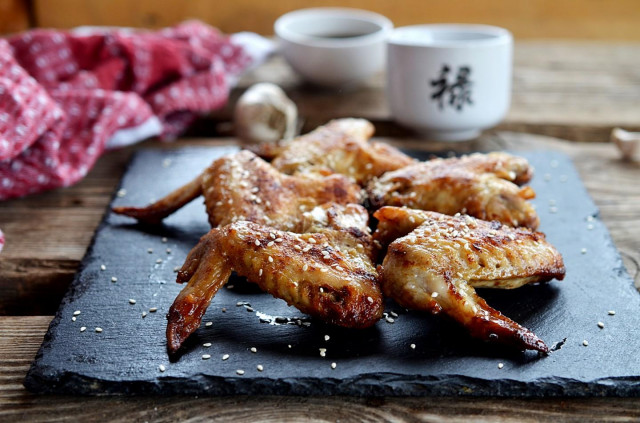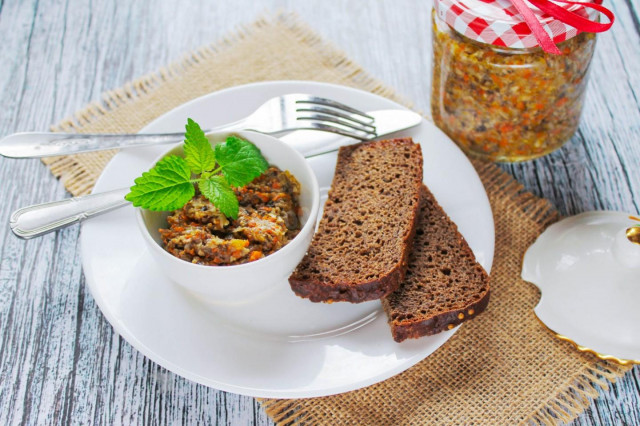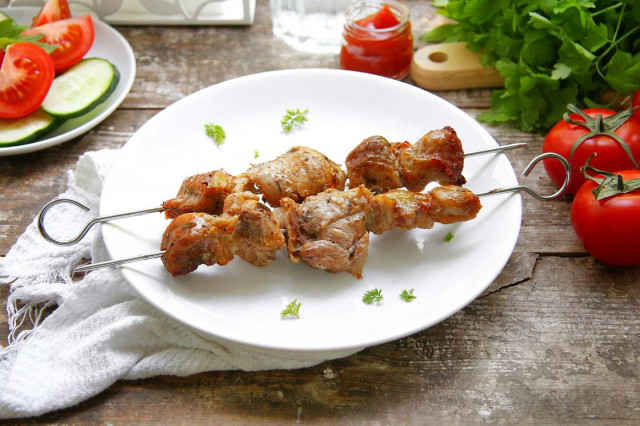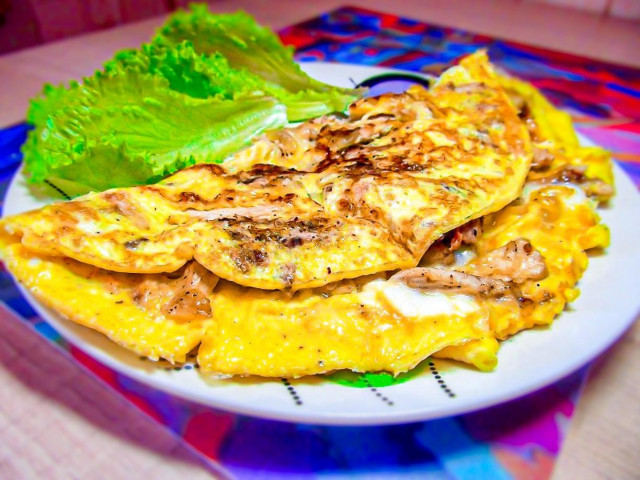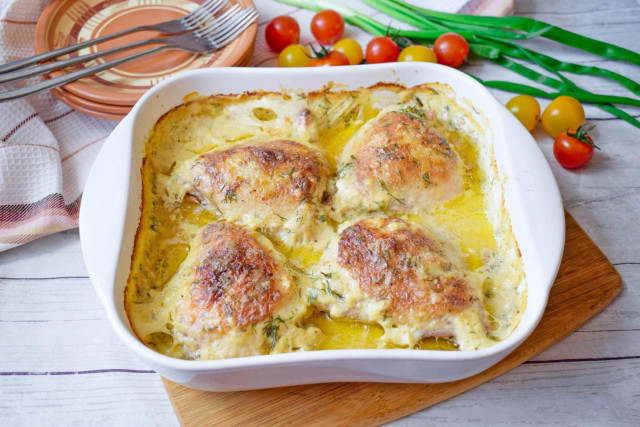Composition / ingredients
Step-by-step cooking
Step 1:
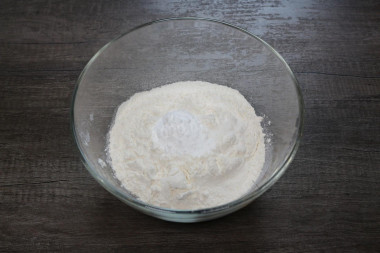
How to make Japanese Gyoza dumplings? It is most convenient to start with the preparation of the dough. Later, when the dough is resting, prepare the minced meat with vegetables. This way you can save time. Take a deep container and sift flour into it (I use premium flour), add potato starch and two pinches of salt. Mix the ingredients so that they are evenly distributed.
Step 2:

Now gradually pour boiled water (130 ml.) into the container with the contents and first knead the dough with a whisk, later with your hands. When the dough begins to form, put it on the board and continue kneading for another 5 minutes to make it more elastic. Then put it back in a deep container and cover with cling film. Leave the dough to rest for 30 minutes.
Step 3:
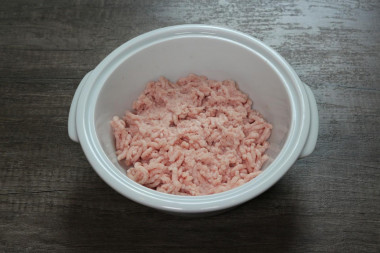
At this time, prepare the meat filling. Grind the pork through a meat grinder.
Step 4:

Cut the green onions into small rings, chop the Chinese cabbage into thin strips. In a bowl with minced meat, add chopped onion and cabbage, chopped garlic cloves, lemon juice, grated ginger, soy sauce, salt. Mix all the ingredients thoroughly so that they are all evenly distributed among themselves.
Step 5:
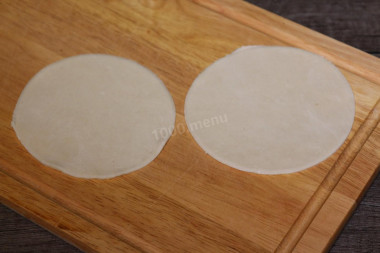
After 30 minutes, open the film slightly and take a small piece of dough so that it is convenient to work (I divide it into about 6 parts). Roll it out into a thin layer and cut out mugs from the dough. The diameter of the circles I have is almost 10 cm. If necessary, lightly sprinkle the dough with flour (I sprinkled it extremely rarely and just a little so that it didn't stick to the rolling pin, while I didn't even have to sprinkle the work surface itself).
Step 6:

Now put 1 teaspoon with a slide of filling in the center of the circles. Pour plain filtered water into a small bowl or something similar.
Step 7:

Blind gedza as follows. Place a circle with minced meat on your left hand. Moisten the fingers of your right hand in water and walk around the perimeter of the mug. This is done to make the dough stick together better. Now, as it were, put one half of the dough on the other, but do not press, leave the lower part flat, but gradually press the upper part to the bottom, while making folds with your right hand, from left to right.
Step 8:

Put the finished hedza on a board with a stretched film (so that it would be easy to remove the hedza from it later), also cover the top with a film (so that they do not dry). So blind all the gyoza. Then pour olive oil into a saucer and dip the gyoza in it, put it in a frying pan. Do the same with the rest of the gedz.
Step 9:

Fry in a frying pan with a thick bottom until golden brown (about 5 minutes), then pour in water (100 ml.), cover the pan with a lid, reduce the heat to medium or slightly lower (depending on the plate on which the dish is being prepared) and cook under the lid for another 7 minutes. Then remove the lid and continue to fry the gyoza until the water has completely evaporated. Place portions on plates and serve with soy sauce and fresh green onions.
In our family, everyone liked these dumplings very much. Gyojo are famous for their garlic-ginger flavor, in seemingly ordinary-looking dumplings. If you are trying Japanese dumplings for the first time, I advise you to add ginger and other spices carefully, adjusting to your preferences.
When adding soy sauce to a dish, it is worth considering that it has a rather salty taste. Reduce the total amount of salt, otherwise you risk over-salting.
Important! An incorrectly selected frying pan can ruin even the best recipe. All the details on how to choose the perfect frying pan for different dishes read here .
In addition to pork, any other meat can be used in this dish. Keep in mind that the cooking time, as well as the taste and calorie content of the dish will change. For example, beef is cooked longer than pork, and chicken fillet or turkey is less.
Caloric content of the products possible in the composition of the dish
- Pork fat - 333 kcal/100g
- Pork meat - 357 kcal/100g
- Pork - lean roast - 184 kcal/100g
- Pork chop on a bone - 537 kcal/100g
- Pork - schnitzel - 352 kcal/100g
- Pork Shoulder - 593 kcal/100g
- Boar's leg - 113 kcal/100g
- Pork - 259 kcal/100g
- Garlic - 143 kcal/100g
- Ginger - 80 kcal/100g
- Dry ginger - 347 kcal/100g
- Pickled ginger - 51 kcal/100g
- Whole durum wheat flour fortified - 333 kcal/100g
- Whole durum wheat flour, universal - 364 kcal/100g
- Flour krupchatka - 348 kcal/100g
- Flour - 325 kcal/100g
- Soy sauce - 51 kcal/100g
- Chinese cabbage - 16 kcal/100g
- Green onion - 19 kcal/100g
- Salt - 0 kcal/100g
- Water - 0 kcal/100g
- Lemon juice - 16 kcal/100g
- Olive oil - 913 kcal/100g
- Potato starch - 300 kcal/100g


